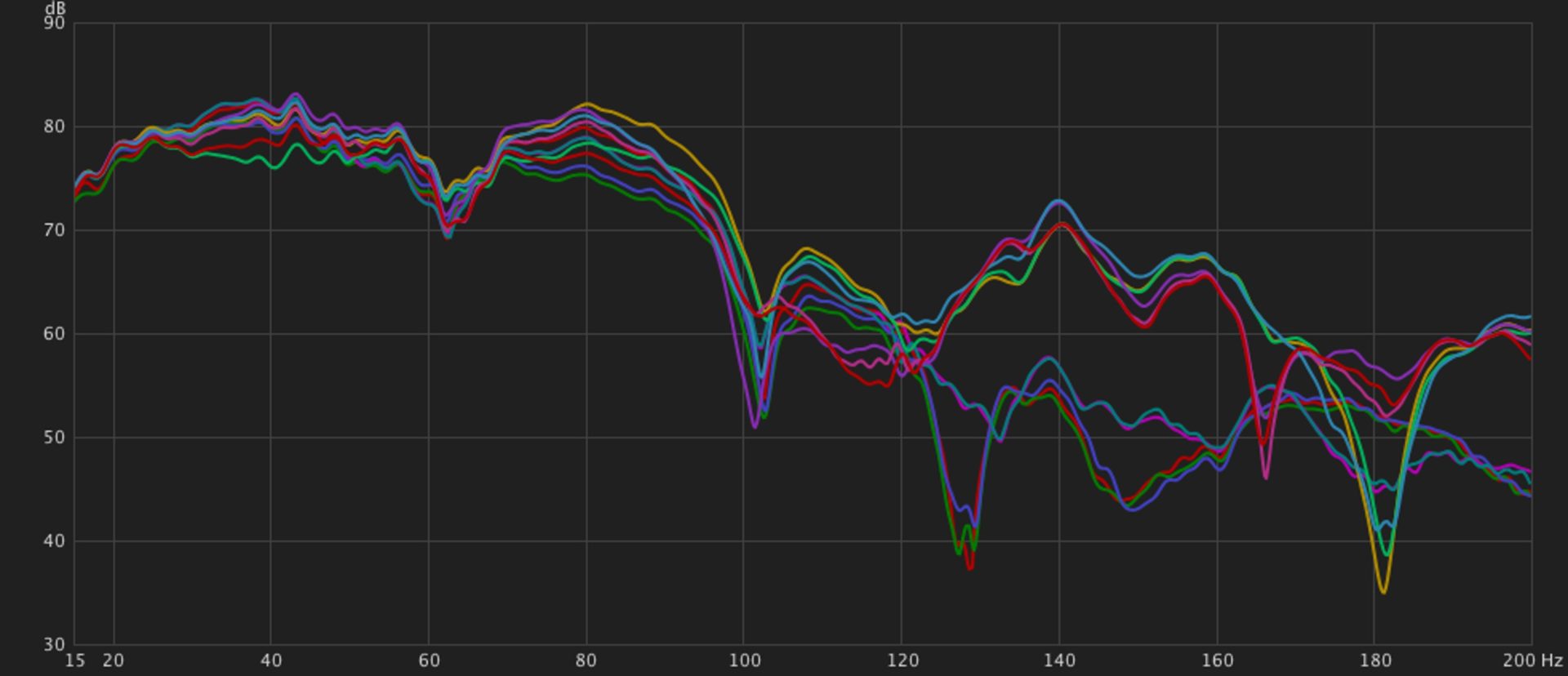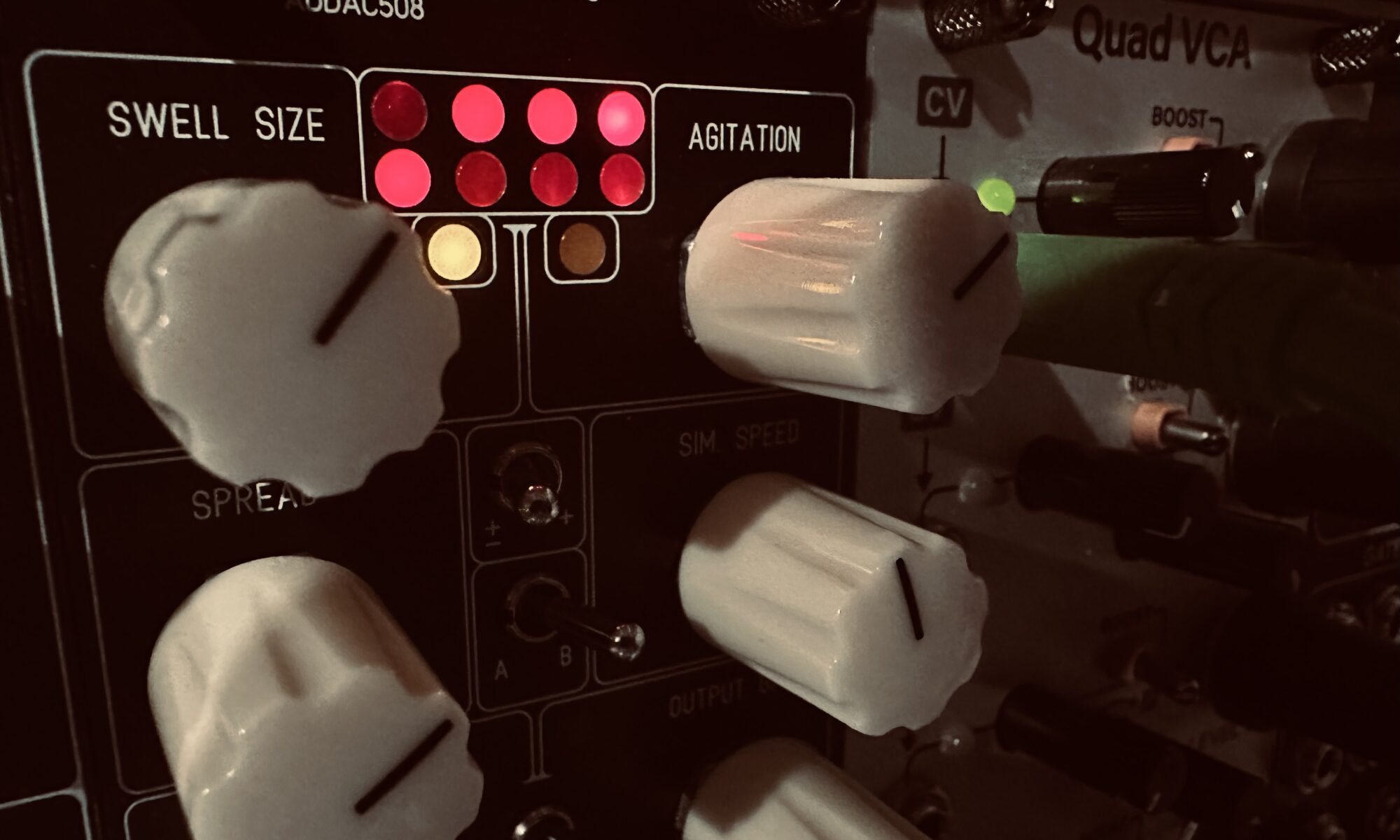The moment the new Addac508 Swell Physics was announced, I instantly knew I’d get one as soon as it was released. Even after just having completed one of my several small modulation subsystems, I quickly moved things around on Modular Grid in order to accommodate for Swell Physics. There was no way I wasn’t going to fit in something as cool as this in my modulation.
In a long ago life in the ancient times of the late 90s and early aughts, I was an avid Scuba Diver. I met my wife in Scuba Diving class in college (it was South Florida; of course there is Scuba Diving for college credit). We ran a very active Scuba Club at our university that won several university community and environmental awards. We dove nearly every weekend for years up and down the Southeast Florida coast, the Keys, and in North Florida’s freshwater springs. I was fascinated by the ocean, and still am. An ocean simulator in my current hobby? Sign me up.
In full admission, my first date with the Swell Physics was a disaster. No matter what I did, I could never quite get what I was looking for. Ranging from “absolutely horrid” to “okay but still not very good”, I became frustrated quickly. I’d so eagerly anticipated this module, and I couldn’t tame it. Not even a little. Either waves would last too long, or not long enough. I’d have awkwardly long stretches of nothingness, or seemingly never ending havoc. I soon decided to unpatch and try again another day.
Several weeks back I decided to watch the comprehensive Batumi/Poti II review by the ever-entertaining and informative Robin Vincent at Molten Music Technology. I’ve had the Batumi II for a short while and was checking if he had any tips that might help me utilize the new functionalities in creative ways. And although he did help me understand the new module better and encouraged me to implement its more advanced functionality in more patches, what I noticed most wasn’t the Batumi II or its capabilities, but in how he was demonstrating the module with the RYK Algo. The Algo was there simply as a vessel to demonstrate what the four signals of the Batumi II were doing in the most obvious way possible: straight to the four level inputs to bring the volume of each oscillator in and out as the LFO signals from Batumi ebb and flow in their range. It was beautiful, and I was inspired, especially as the modulation got more complex. It was while I watched this video that the proverbial light bulb moment happened. “Hey. Wait a minute. The Swell Physics has four interrelated outputs too. And I’ve been curious about the Algo. Hmmmmmm….” I already have a four operator FM module in the Quad Operator, but I also remembered that first frustrating patch was with the Quad Operator, and so decided to let out that fart and buy an Algo. It wasn’t an impulse buy, I’d been eyeing it since its release, and imagining one paired with Swell Physics was the final pang of GAS that implored me to finally hit “Add to Cart.”
Although I hadn’t yet used the Algo, and was only as familiar with it as having watched the few demo videos on YouTube, plus a cursory look at the manual. I knew it should be fairly intuitive, and I was right. Using its basic functionality out of the box as a four oscillator bank, complete with panning and level adjustments, as well as detuning, wavefolding, wave shaping, and chorusing was very intuitive. Although I didn’t experiment with the FM algorithms, I’m sure those are just as intuitive. Within a minute or two I already knew what I wanted to do and how to accomplish it. The only questions were a matter of how I wanted to facilitate the process.
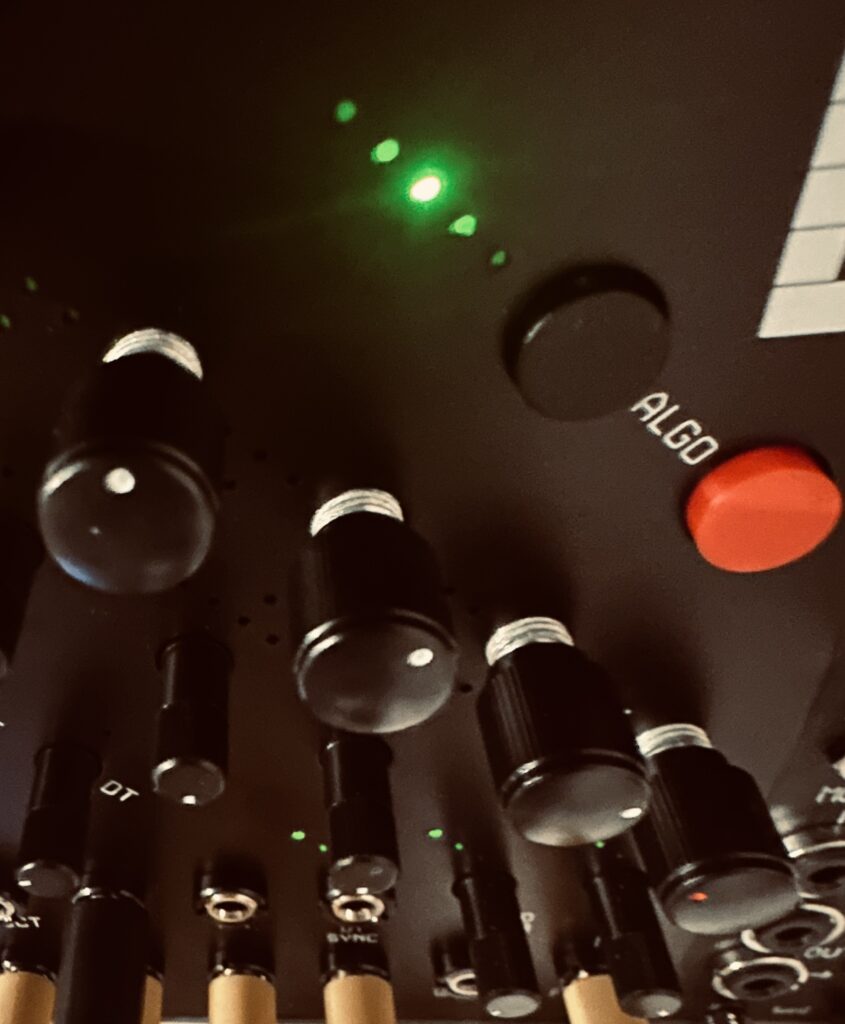
Having recently received the Algo, and with Robin’s demo still fresh in my mind, I decided to give that patch a go. But rather than using Batumi, I decided that Swell Physics would be the main driver of this patch.
From the get-go I knew the concept behind this patch was simple. Run the four wave outputs from the Swell Physics to the four level inputs of the Algo, and see if I could get a pleasant succession of waves that flowed freely and delicately. To my surprise, it went much more amicably this second time around, and I was able to get a nice flow of waves. I tried also using pitch CV for some change, but it didn’t sound right, nor could I get the changes from one pitch to another smooth enough to not have blips or huge slurs. I mostly left it without pitch changes because it conveyed that “lost out in the ocean” feeling more clearly to my ear.
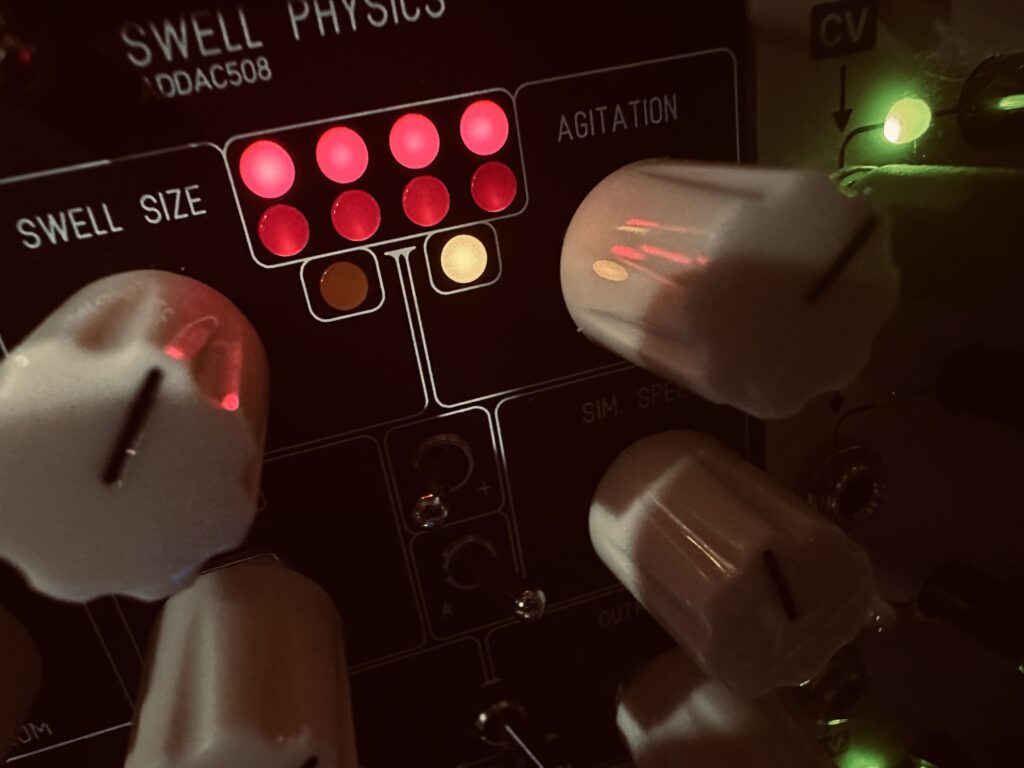
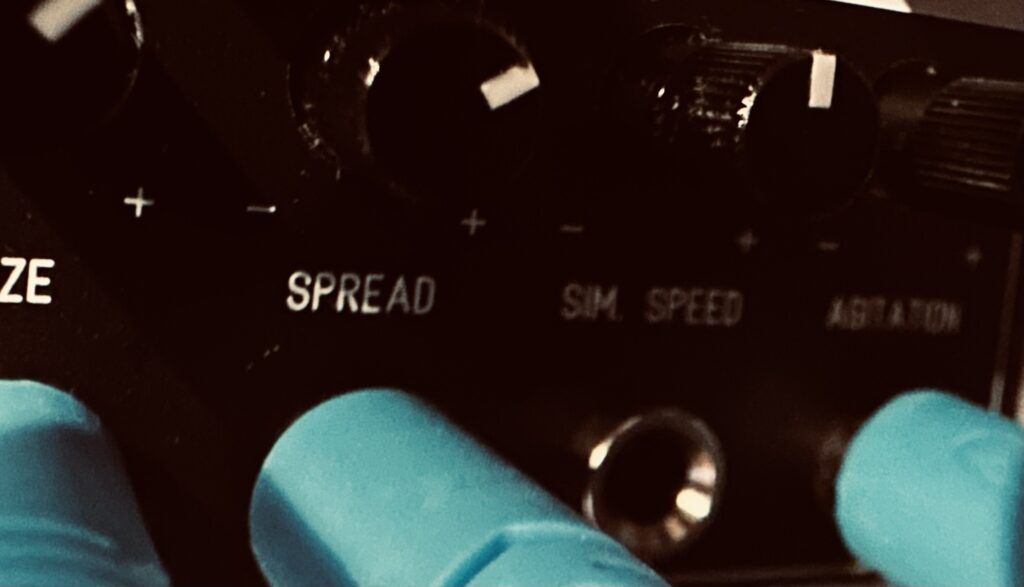
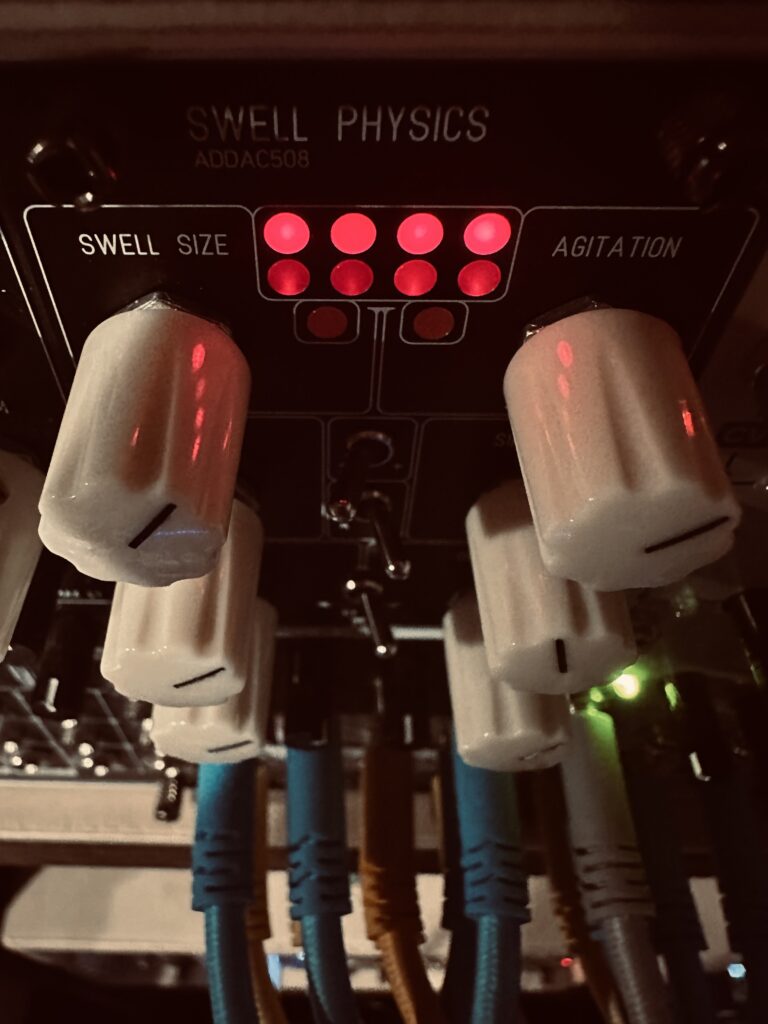
After getting to a wave pattern I liked, I decided it was time for some modulation. To get the wave machine changing. I knew I wanted the waves to serve as modulation in this patch, including a fair bit of patch programming with the Swell Physics. I sent the “Avg” output to an Intellijel Quad VCA, and used three of the attenuated outputs on the Spread, Agitation, and Swell Size CV inputs, using the much easier to access Quad VCA knobs to control the amount, and the fourth to the Wavefolder CV input on the Algo to occasionally reveal some higher harmonics from those 4 simple sine waves floating about. Not much. Just a shade.
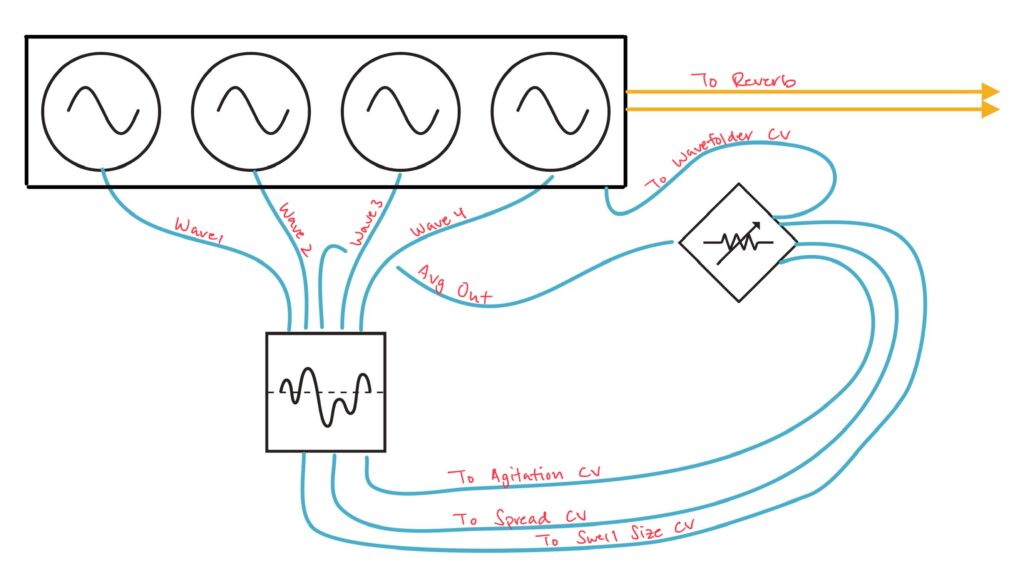
From here, the patch was quite simple. The first several minutes of the recording are just the Swell Physics modulating the RYK Algo, which went out to the mixer and was sent through the Vongon Ultrasheer. Later I introduced Mutable Instruments Beads in parallel with Beads running through the Bizarre Jezabel Blossom. There is no external randomization on Beads; only the onboard random used by adjusting the attenuverters. Blossom, however, is heavily modulated by the Joranalogue Orbit 3. I had thought about using the Swell Physics to also modulate Blossom, but by the time I was creating this part of the patch I had already routed Swell Physics, and sharing modulation would have necessarily meant several bits of repatching I wasn’t prepared to do. I decided to use the Orbit 3, also engaged in patch programming, as my modulation source for Blossom. Chaos and the physics of waves are not dissimilar, and they paired quite naturally.
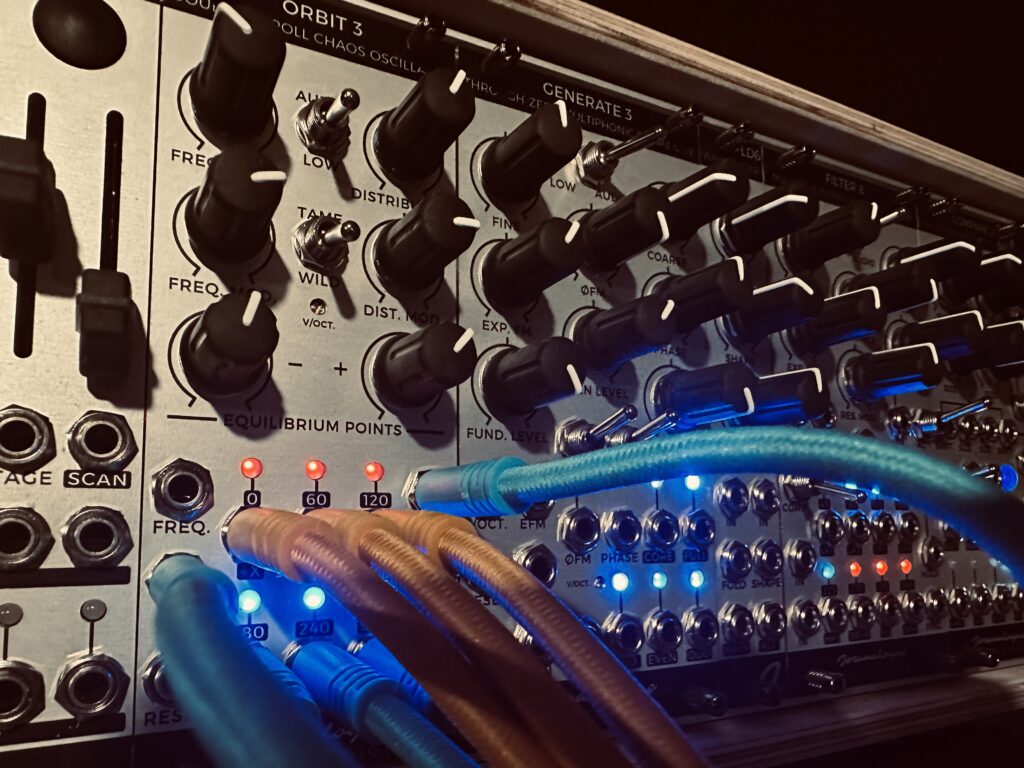

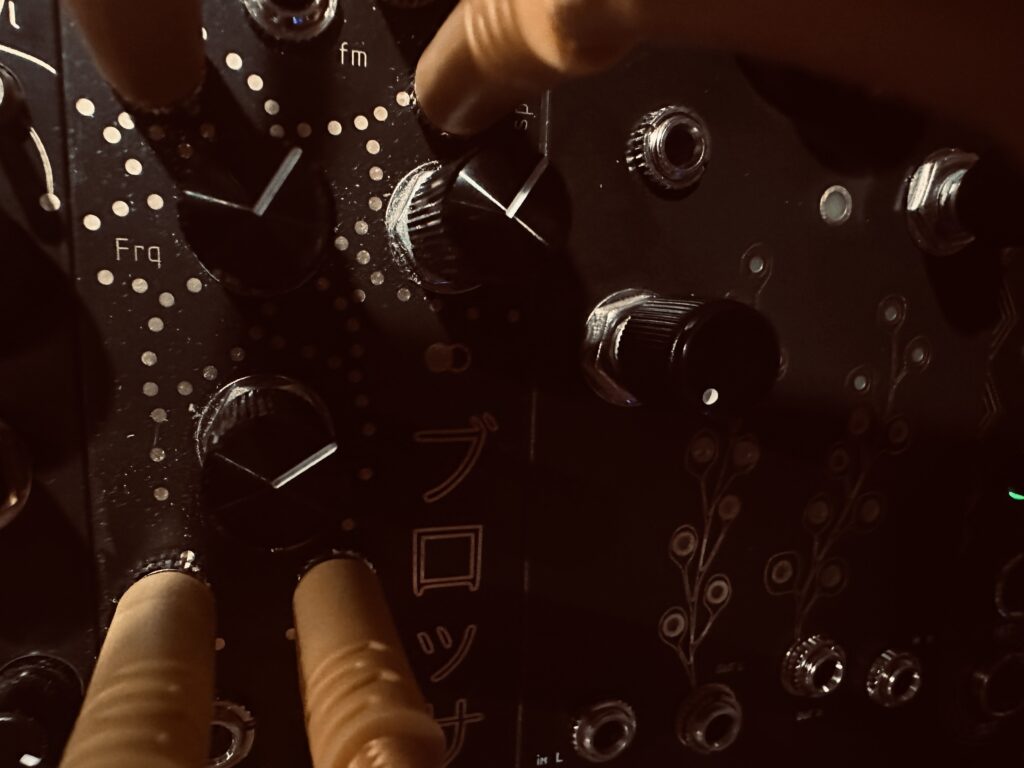
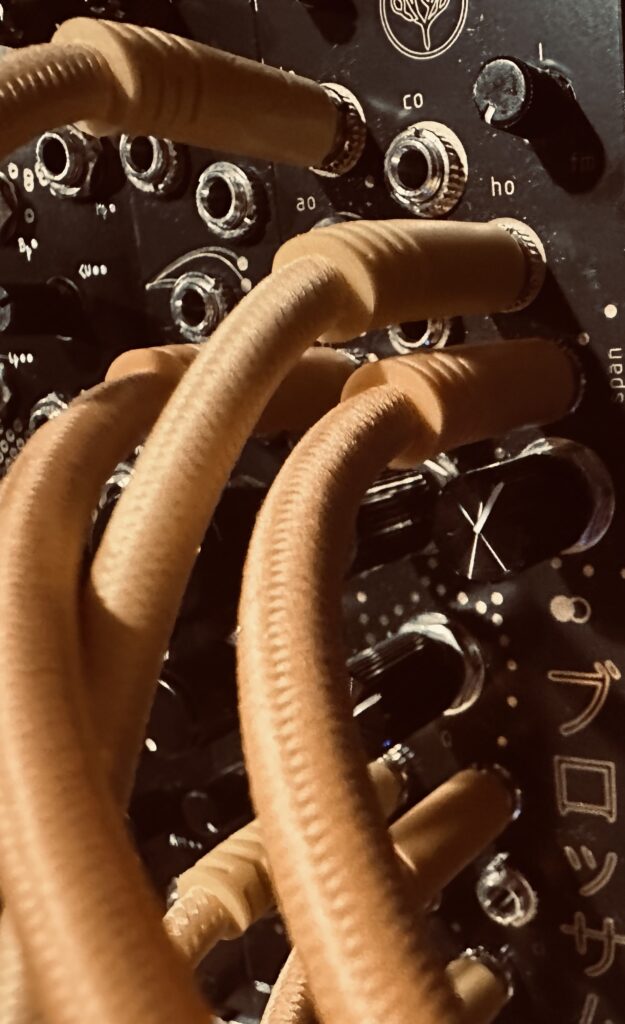
Modules Used:
Addac508 Swell Physics
RYK Modular Algo
Intellijel Quad VCA
AI Synthesis 018 Stereo Matrix Mixer
Mutable Instruments Beads
Mutable Instruments Veils
Joranalogue Orbit 3
Bizarre Jezabel Blossom
Knob Farm Ferry
Vongon Ultrasheer
Performed and recorded in 1 take in AUM on iPad via the Expert Sleepers ES-9.
